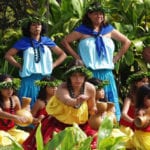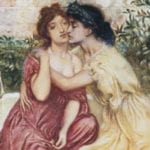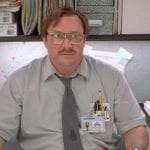 Weird Stuff
Weird Stuff  Weird Stuff
Weird Stuff  Mysteries
Mysteries 10 Tragic Disappearances and Deaths in Joshua Tree National Park
 History
History 10 Ways Childhood Really Sucked in the Old West
 Music
Music 10 Name Origins of Famous Bands from the 1990s
 Religion
Religion 10 Biggest Turnarounds by the Catholic Church
 Weird Stuff
Weird Stuff 10 Unbelievable Times Laws Had Unintended Consequences
 Humans
Humans Ten Historic Women Who Deserve Way More Credit Than They Got
 Movies and TV
Movies and TV 10 Films That Spawned Major Lawsuits
 History
History Ten Times Towns Were Wiped Off the Face of the Earth
 Creepy
Creepy 10 of the Most Disturbingly Haunted Public Houses in the UK
 Weird Stuff
Weird Stuff 10 Niche Subcultures That Are More Popular Than You Might Think
 Mysteries
Mysteries 10 Tragic Disappearances and Deaths in Joshua Tree National Park
 History
History 10 Ways Childhood Really Sucked in the Old West
Who's Behind Listverse?

Jamie Frater
Head Editor
Jamie founded Listverse due to an insatiable desire to share fascinating, obscure, and bizarre facts. He has been a guest speaker on numerous national radio and television stations and is a five time published author.
More About Us Music
Music 10 Name Origins of Famous Bands from the 1990s
 Religion
Religion 10 Biggest Turnarounds by the Catholic Church
 Weird Stuff
Weird Stuff 10 Unbelievable Times Laws Had Unintended Consequences
 Humans
Humans Ten Historic Women Who Deserve Way More Credit Than They Got
 Movies and TV
Movies and TV 10 Films That Spawned Major Lawsuits
 History
History Ten Times Towns Were Wiped Off the Face of the Earth
 Creepy
Creepy 10 of the Most Disturbingly Haunted Public Houses in the UK
Top 10 Classic Cocktails And Their Histories
We love to imbibe! The sound of a shaker tossing around chunks of ice as pristine spirits splash around inside. The condensation on a half-finished Old Fashioned. The glorious variety or colors, glassware and garnishes. Having a cocktail and feeling socially loose and lubricated is a pleasure many of us love dearly. However, most of us have no idea what we are drinking or where it came from. Why is called what it’s called. Plus, you know you want to be that person to impress your friends with this niche knowledge. Because at the end of the day, cocktail history is hazy, crazy, and down-right catty sometimes when it comes to claiming to have created a drink. Here are some of the best backgrounds to ten classic cocktails.
Top 10 Bizarre Alcoholic Drinks
10 Manhattan
Popular myth tells a grandiose tale of Winston Churchill’s mother ordering a “whiskey martini” at NYC’s Manhattan Club and then cheering the concoction upon tasting it to the crowd’s applause. This is false. Winston Churchill’s mother, Lady Randolph Churchill was pregnant with him during this “gathering” on another continent. It’s unlikely she was going around creating legendary cocktails. The true story states… “The Manhattan cocktail was invented by a man named Black, who kept a place ten doors below Houston street on Broadway in the 1860’s” which was written by William F. Mulhall who tended bar for three decades at New York’s legendary Hoffman House where the drink seems to have been truly conceived. And yes, the Manhattan Club still flaunts the lie about Churchill’s mom.[1]
9 Margarita
This cocktail has over a half dozen origin stories spanning from 1936-1961. Some of the stories are more than just a bar claiming fame. A Dallas socialite claimed to have created it at a party which was attended by Tommy Hilton of Hilton Hotel’s where he later served in it his hotel’s bars. There is also a story of a bartender who whipped it up on the fly to impress a Ziegfeld dancer who was allergic to most spirits except tequila. All not true. The real story comes down to chronological plausibility. Margarita means “Daisy” in Spanish, and a daisy cocktail was around for quite some time, but made with brandy. As Americans flooded over the border during prohibition to wet their whistles’, brandy was substituted out with tequila and the margarita was born.[2]
8 Pina Colada
This festive classic can trace its roots back to Puerto Rican pirate Roberto Cofresi, who reportedly gave his crew a concoction of coconut, pineapple and rum to boost morale. Unfortunately, hordes of places on the island claim to be the originator these days. The best answer is that Ramon “Monchito” Marrero created the recipe after months of alchemy as he worked behind the stick at the Caribbean Hilton Hotel. As this is the earliest conception of the cocktail and since it coincides with the birth of a key ingredient during that same time-frame, Coco Lopez, the government of Puerto Rico backs all of this and even celebrates Monchito and the bar as national treasures.[3]
7 Aviation
This “Bartender’s Handshake”, in-the-know cocktail was originally shaken-up by Hugo Ensslin at the Hotel Warwick in New York in 1916. There is, however, a recipe feud amongst aficionados. Considered the “dean of cocktail shakers”, Harry Craddock omitted the hypnotically floral crème de violet when he published his masterful Savoy Cocktail Book, considered the quintessential cocktail manual, in 1930. The original recipe is what’s commonly served nowadays and the recipe has had a complete resurrection with younger generations as it is refreshing, different, and delicious.[4]
6 Mint Julep
Hold your horses! It’s important to mention cocktails were initially considered medicinal elixirs. Nearly every alcoholic recipe from the 18th and 19th centuries was considered a remedy for some ailment. The mint julep falls into that category. Southern farmers would drink it instead of coffee in the morning believing it put more of a pep-in-their-step and its earliest literary mentions go back as far as the 1780’s. The drink gained worldwide fame when it became the official cocktail of the Kentucky Derby in 1938 and nowadays you can get one in a golden cup for $1000. Back in the day, they preferred a pewter or silver cup and it was strictly held by the very top or bottom to prevent the heat from one’s hand from melting the intended frost that would build around the metal from the chill of the crushed ice. The word “julep” is from the ancient Persian word “galub” which means “flavored rosewater”.[5]
10 Quenching Legends, Myths, And Stories Involving Alcohol
5 Sidecar
This delicious classic, one of six essentials every bartender should master according to David Embury’s The Fine Art of Mixing Drinks (1948), has a vivid backstory. London and Paris both claim the rights to this bold cocktail, both are wrong. New Orleans, which is about to steal the show the next few drinks, is the hands-down “cocktail capital of the past” and gets to technically claim this one as its own too. The fact is London’s legendary Pat MacGarry brought it from Paris where the Ritz claims it along with Harry’s New York Bar (also in Paris). Legend goes, an American army captain after WW1 arrived at Harry’s in a motorcycle sidecar and specified the ingredients of the drink. I would bet good money the unknown army captain was from Louisiana and what he was actually ordering was a “Brandy Crusta” that goes as far back as 1862.[6]
4 Vieux Carre
Pronounced “voo-ca-ray”, this absolute essential fell out of grace with bartenders in the 70’s and 80’s once mixers got into the game. This dangerous goblet of whiskey and brandy is New Orleans to the bone. The name literally means “French Quarter”. Although it can be a difficult drink to make at 6 steps to build, it has made a formidable resurgence and is currently a sign a bartender knows what they are doing by being able to mix it by memory. Invented in 1938 by Walter Bergeron while behind the stick at the historic Hotel Monteleone in the “Big Easy”, this drink and where it was born deserves a place on your bucket list as the bar itself in the hotel is unlike any other with a wooden custom-carved rotating carousel.[7]
3 Gin & Tonic
This drink, literally, had a hand in why the sun never set on the British Empire. Gin itself was created as a medicinal elixir by Dr. Sylvius de Bouve in Holland during the 16th century. In 1640, utilizing the bark from the cinchona tree from South America, quinine syrup was extracted and proven to not only cure, but prevent malaria which was having a hell of a time on humans worldwide. When mixing quinine syrup with soda water, you get tonic. Gin and tonic then went global as soldiers and the British East India Company mixed the medicinal tonic with their gin rations (yes, the booze was also considered medicinal at the time).[8]
2 Sazerac
These next two are a bit controversial in their order, but best to get back to New Orleans. Home to the Sazerac, French 75, Hurricane, Vieux Carre… need I say more? Named after a French cognac with the same namesake that was initially used in the recipe, it is said Aaron Bird created the cocktail at the Sazerac Coffee House smack in the middle of the Crescent City with the bitters (and apparently help) of the renowned alchemist himself, Antione Amedie Peychaud (inventor of Peychaud bitters) in the 1850’s. Considered the first cocktail by many, this concoction had two major improvements in the 1870’s… absinthe was added to the recipe and the base changed from cognac to rye whiskey after an insect plague wiped out Frances vineyards at the time, halting all cognac production. It should be noted that Peychaud is credited for the word “cocktail” as he used a double-sided egg cup to measure his ingredients for his experimental potions, which back then, the little egg cup (which was the precursor to what is the “jigger”), was called a “coquetier”.[9]
1 Old Fashioned
During prohibition, booze was mostly stringent bootleg garbage. So, naturally, a lot of classics had their recipes tainted during that era by a ton of unnecessary sweeteners. That’s why, when I write about an Old Fashioned, I do not mean the drink with a fruit salad dumped under the ice. An Old Fashioned should simply have a large chunk of ice and a cherry as garnish. That’s it. The recipe first appears on paper in 1862, and then James E. Pepper gets credit for bringing it from Louisville, Kentucky to the Waldorf-Astoria in NYC. Why is this one number one? It’s bitters, sugar and booze… this is where I consider it all started in its purest form. Absinthe didn’t show up in the Sazerac until the 1870’s, so the Sazerac was still evolving while the Old Fashioned has always been what it is. It’s the “old fashioned way” to sweeten up your whiskey. Cheers![10]
About The Author: Former chef and bartender with 10 years of New York City restaurant experience.








